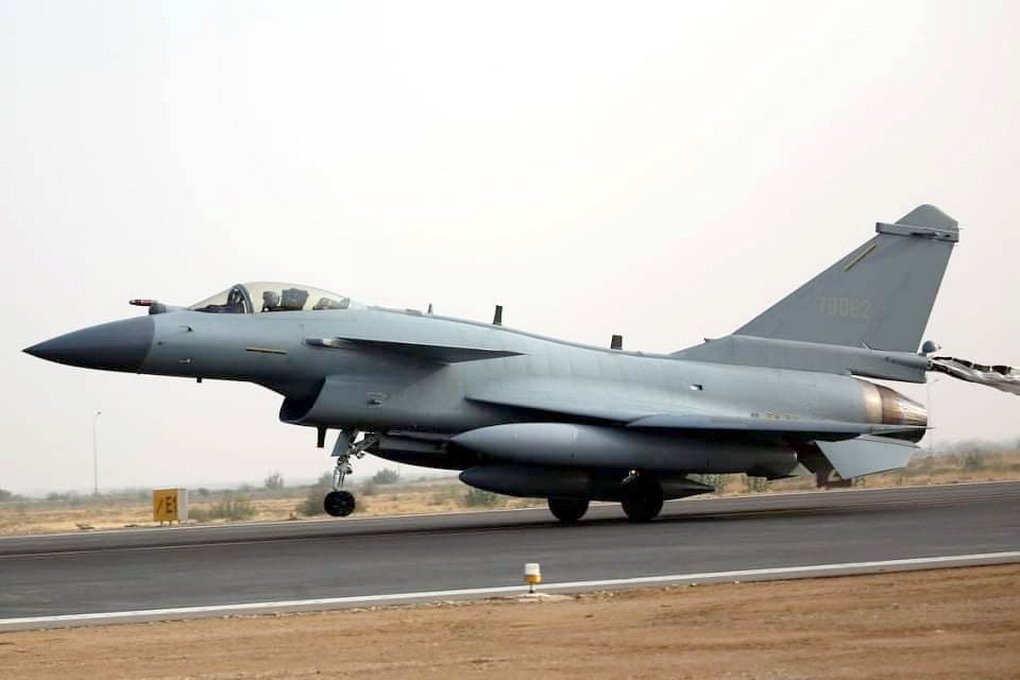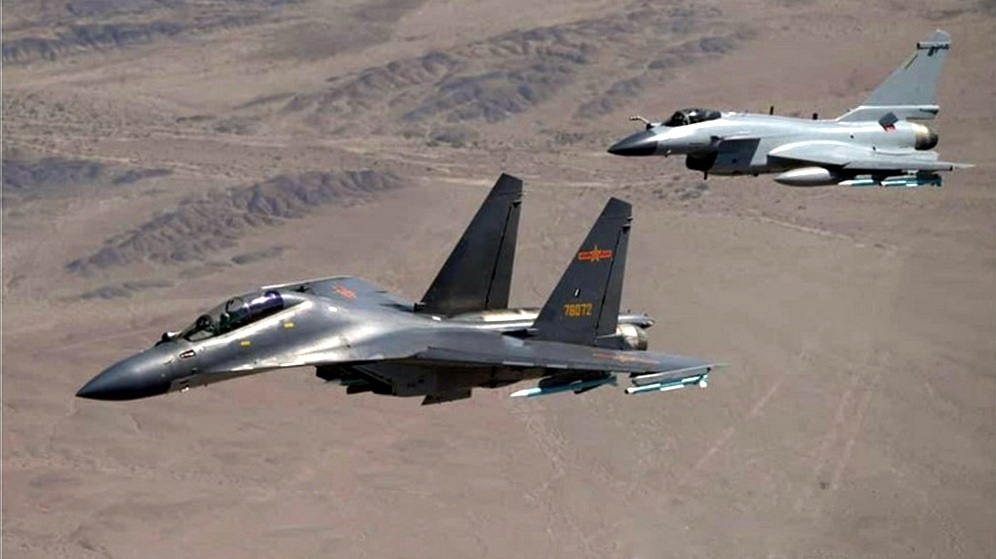By MilitaryWatchMagazine
The Pakistan Air Force has faced a growing capability disadvantage against neighbouring India in recent years, with the commissioning of larger numbers of Su-30MKI heavyweight fighters and a small number of lightweight Rafale jets expected to provide superiority over the elite of a Pakistani fleet. The Su-30 is considered the most capable fighter in South Asia by a considerable margin, while the Rafale provides a niche strike capability and is prized for its deployment of formidable Meteor long range air to air missiles that give it a very comfortable advantage in range over Pakistan fighters. Although Pakistan is expected to largely close the technological gap with the induction of the JF-17 Block III lightweight ‘4++ generation’ fighter, which saw its first flight in December 2019 but has yet to enter service, it has also received Chinese assistance in training and preparation to engage the Su-30 and Rafale. Although Pakistan’s fighter fleet is comprised entirely of single engine lightweight aircraft, the bulk of which are third generation designs with the F-16 and JF-17 forming a four generation elite, China has deployed fighters from higher weight ranges and technological levels to the country in the past for training – where they have mimicked the capabilities of the Su-30 and Rafale to allow Pakistani air units to develop effective tactics to tackle them.
China’s J-11B heavyweight twin engine air superiority fighter is fielded in larger numbers than almost any other aircraft of its kind in the world, and is based on the same Soviet Flanker airframe design as the Su-30MKI. The latest J-11B variants are considered much more capable in air to air to air combat than the Su-30, and integrate indigenous electronic warfare, sensor and weapons technologies including AESA radars which the Su-30MKI lacks. Since at least 2017, the fighters have deployed to Pakistan for exercises where they provided key experience for the country in countering heavyweight Flanker aircraft. More recently, as observed during the Shaheen IX exercises in December 2020, China’s lightweight J-10C ‘4++ generation’ fighters were deployed to Pakistan and tasked with mimicking the capabilities of the new Indian Rafale jets – the first of which had entered service earlier that year. Despite only entering service from April 2018, over 200 J-10C fighters are already in service and they are widely considered the world’s most capable single engine fighters of their generation. China’s Global Times state media outlet highlighted that many aspects of the J-10C including its size, aerodynamic characteristics, aviation and weapon systems were comparable to the Rafale, meaning it was a suitable aircraft to mimic it in training.

The J-10C uses a single WS-10C engine producing approximately 145-150kN of thrust, where the Rafale uses twin M88 engines each putting out 75Kn, meaning despite using only one engine the power levels of the two aircraft are similar. The Rafale’s use of twin engines despite its light weight is thought to reflect the limitations of France’s engine industry, which has yet to produce an engine with comparable characteristics to the latest Chinese or American designs. Use of a single engine is more efficient, however, and reduces maintenance requirements. With comparable levels of thrust, the J-10C is a much lighter aircraft using a very high composite airframe, and also benefits from three dimensional thrust vectoring on its engine for extreme manoeuvrability. The Rafale has a much higher thrust/weight ratio and no thrust vectoring making it much less manoeuvrable. The J-10 also benefits from a much higher speed, climb rate and operational altitude, meaning it can very easily mimic the French built jet’s flight performance.
The Chinese fighters advantages largely reflect the fact that it was developed by a country with a technological base and defence sector several times larger than that of France, which provides not only greater efficiency but also much higher end technologies. With the J-10C’s PL-15 long range air to air missile having a similar range to the Meteor, and both having advanced AESA radar designs which are difficult to jam and provide high situational awareness, the J-10C can simulate the Rafale’s capabilities very well. The Chinese fighter retains further significant advantages for a missile fight however, including use of the high off bore sight PL-10 short ranged missile which comfortably outperform the French Magic II, and a lower radar cross section due to its smaller size and stealth coatings. The fighter also has access to cruise missiles with Mach 3+ speeds for both air to ground and anti shipping roles – over twice as fast as the Rafale’s own missiles. The J-10C is the most advanced Chinese fighter to have been made available for export, and while the lighter and cheaper JF-17 Block III integrates many of the same technologies, the fighter is reportedly being considered to modernise the Pakistani Air Force and possibly eventually replace some of the older F-16 variants which have served in the country’s fleet for close to 40 years.





